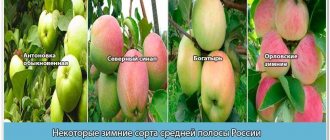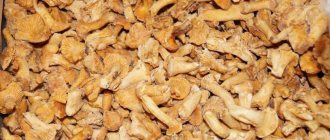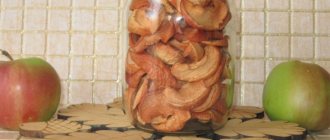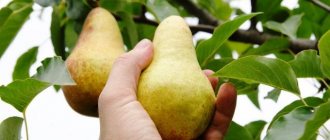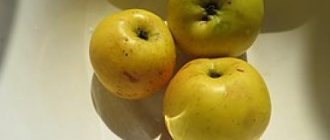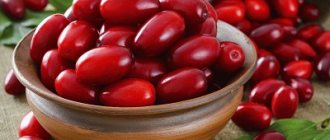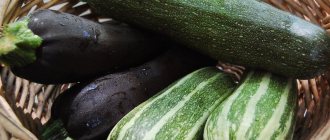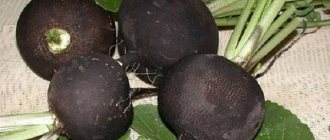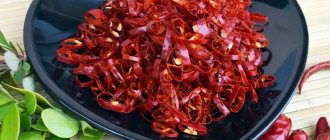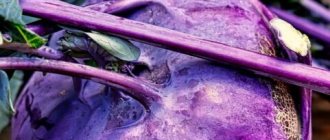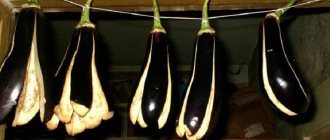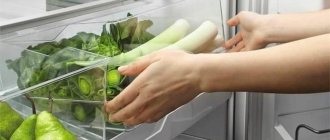What varieties of apples can be stored in winter?
For long-term storage, mainly only winter varieties of apples are suitable: Golden, Antonovka, Simirenko, Melba, Idared, Zhigulevskoe. Harvesting from these apple trees begins at the end of September and ends until October 9. During this period, the fruits gain sugar content and fully ripen. You should not collect them earlier or later than the due date. At temperatures from -2 to +3 degrees, fruits remain fresh for 6.5 months, while the taste and benefits are preserved.
Autumn varieties of apples are stored for less time - about two months, provided that the air temperature in the storage is 0 degrees. Popular autumn apple varieties include: McIntosh, Spartak.
Niche in the wall
When developing standard projects for apartment buildings, the need to store fruits and vegetables in the apartment was taken into account. In several “Khrushchev series”, a niche was provided in the wall under the window into which food was stored. There were a series of houses with window frames, in the center of which there was a vertical narrow box for storing food. With the improvement of prosperity and the appearance of refrigerators in large numbers, the need for such devices has weakened.
Necessary conditions for safety
To preserve the taste and benefits of fresh fruits for a long time, certain conditions are created. Particular attention is paid to the container in which the fruits will be stored, the temperature and humidity level in the room, as well as the timing of harvesting:
- The optimal temperature limits for storing the harvested crop are within -3...+4 degrees. With such cool air, apples do not freeze and do not spoil for a long time.
- You can choose wooden or plastic boxes or wicker baskets as containers for storing the harvest. The main thing is that there are many holes around the entire perimeter of the container. Do not store in iron containers.
First, large fruits are placed at the bottom of the selected container; at the very top there should be a row of small apples. By following this rule, it is possible to avoid damage due to the pressure of heavy weight.
Advice. Do not store apples near potatoes. You should not choose straw for storage; it imparts an unpleasant taste and smell to the fruit, and also reduces shelf life.
A properly organized place is the key to a long shelf life of the harvested crop without diseases, pests and rotting.
Sorting
It is advisable to collect fruits that will be sent for winter storage manually. A fruit collector will help you cope with a large amount of harvest. Each picked apple should be inspected from all sides. There should be no dark spots, damage or traces of pests. Such fruits can be dried by first cutting off the damaged part.
Selection of apples for storage involves several stages:
- Inspection of the surface of apples and detection of spoiled specimens.
- Selected fruits are placed in a cool place for 10 days.
- After being in a cool room, a repeat inspection is carried out.
- At this stage, a container for placing the fruit is selected.
Advice. It is not recommended to remove the stem from apples, as it helps to increase the shelf life of the product.
Storage locations
The best place to store crops is a cellar, basement, pantry, attic or balcony. The main thing is to maintain optimal temperature and humidity so that the apples do not freeze or, conversely, rot from the heat. The humidity level in the room where the crop is stored should be maintained at 86-95%.
Treatment
Apples have a waxy layer on their surface that naturally protects them from damage by pests and disease. But some experienced summer residents play it safe and carry out additional processing:
- You can treat it with an alcohol solution based on propolis. 20 g of propolis are diluted in 100 ml of alcohol. The product is first placed in the refrigerator to make it easier to chop using a grater.
- It is recommended to hold the apples for a few seconds in a solution of calcium chloride. Only after this treatment, the fruits are thoroughly washed with warm water and soap before consumption.
- Each fruit is thoroughly lubricated with glycerin. After complete drying, proceed to placing in the prepared container.
- It is useful to dip each fruit in melted paraffin. In this form they will lie for many months, maintaining their juiciness and taste.
See also
Full description of the autumn apple tree variety Mama Cups and its characteristicsRead
By spending a little more time and effort on pre-treatment, gardeners will get a good result that will delight all family members and guests all winter long.
Optimal humidity and temperature
It is important to know at what temperature it is possible to preserve all the useful microelements and the taste of the pulp. As already mentioned, the optimal temperature is considered to be 0 degrees. The acceptable lower limits are considered to be -4 degrees, and the upper limits are +4 degrees.
At air temperatures above +4 degrees, the fruits begin to release a special substance in large quantities - ethylene. This causes early damage to the crop. If the temperature is too low, below -2 degrees, the pulp freezes.
The humidity in the room should be high. Ideally, humidity should be between 85-95%. If the fruit becomes limp, a container of water should be brought into the room where the crop is stored.
At what temperature, humidity and other storage conditions?
Fruit can be preserved if the following conditions are met:
- temperature range from +°1C and above;
- air humidity not lower than 85%;
- using only closed containers (fruits begin to deteriorate faster when exposed to sunlight);
- away from other fruits and vegetables.
It is important to protect the harvest both from sub-zero temperatures (fruits freeze, lose their juiciness, sweetness) and from extreme heat (fruits begin to rot from high temperatures).
Read the article at what temperature you can store apples at home in winter.
Where to store fruits at home
Each summer resident chooses independently where it is more convenient for him to store the harvest. This could be a separate barn, cellar, basement. If such premises are not available, a storage room, insulated balcony or loggia is suitable.
On the balcony and loggia
The harvest collected from apple trees can be successfully stored on the balcony and loggia, but provided that they are glazed. If the balcony is insulated, then drawers and racks are quite suitable for storage. They take up little space and hold a lot of fruit.
Racks look like shelves attached to the wall on which drawers are placed. A good option is shelving with drawers.
In the closet, hallway, on the windowsill
In an apartment, you can store the harvested crops in boxes, but you will need to allocate a lot of space for them. Therefore, the best option would be to distribute the apples in plastic bags. Place no more than 2 kg of product in each bag and make holes for air.
In a refrigerator
A refrigerator is considered a convenient and simple option for storing fruit. Winter varieties can be stored for up to several months. The only problem that summer residents face is the small size of the refrigerator and the lack of a sufficient number of compartments in it.
Rules for storing apples in the refrigerator:
- the crop should be moved immediately after harvesting;
- fruits do not need to be pre-washed or wiped;
- the fruits are sorted into 3 kg plastic bags;
- holes are made in the bags for ventilation;
- Each variety has its own conditions and shelf life, so they cannot be mixed.
If there is a need for longer storage, then heat treatment is carried out first. The fruits are kept indoors at 28 degrees for three days. These conditions contribute to the removal of ethylene from the pulp.
In the cellar
The cellar has the best conditions for long-term storage of apples for the winter, but it must be prepared first:
- the entire room inside the cellar (walls, floors, drawers) is disinfected;
- It is better to whitewash the walls;
- remove plant debris and other debris;
- provide sufficient air permeability inside;
- set the desired temperature and humidity.
Advice. If the air humidity in the cellar is high, then install a tub of lime. At low humidity, it is recommended to place containers with water.
In the freezer
You can store fruits in the freezer whole or chopped:
- The apples as a whole are washed, dried, and the core and stalk are removed. Frozen product is more suitable for adding to baked goods.
- Frozen product in the form of slices is suitable for various baked goods. The peel can be peeled or left on.
- A good option would be to make applesauce and then freeze it.
Frozen fruits retain 90% of their beneficial components, provided that all rules have been followed.
In boxes
A simple storage option is to place the harvest in boxes made of plastic or wood with a large number of holes to allow air to pass through. The bottom of the box is lined with white paper, on which the apples are carefully laid out. It is advisable to repeat the layer of paper after each row. It is allowed to lay in 5-8 rows.
See also
Advantages and disadvantages of apple trees of the Pineapple variety, reviews from gardeners, characteristics and descriptions of the fruitRead
On the racks
A convenient option is to place the collected apples on racks. This option is especially suitable for summer residents who have reaped a large harvest. It would be better if the racks can be pulled out.
If there is no insulation
The temperature regime for long-term storage of apples varies between +2-5C. Unfortunately, it is very difficult to provide the necessary storage conditions in winter on an uninsulated balcony.
Frost has an extremely negative effect on the taste and appearance of apples (the pulp becomes loose, tasteless, the aroma disappears, and the shade of the peel changes).
As soon as the thermometer begins to show sub-zero air temperature, the boxes of fruit must be moved to a warmer place .
As an option, an alternative to moving fruit boxes would be to install a so-called “balcony cellar” on an uninsulated balcony. This is a box with double walls, between which there is insulation (sheets of polystyrene foam or expanded polystyrene).
To maintain the required temperature in the “balcony cellar” in cold weather, small air heating elements with thermostats are installed along the outer contour of the box.
Experts advise setting up “balcony cellars” along the outer wall of the balcony. Due to the fact that the façade is heated by the sun, energy consumption can be reduced.
Ideally, a thermal box with Tenami looks like a low (apples are laid in a maximum of two layers), wide structure, stretched along the entire length of the outer wall of the balcony.
When connecting an electric heating element, fire safety regulations must be observed. The contact points between the tens and the walls of the box must be laid with fireproof materials.
Ways to pack apples for winter storage
There are many ways to arrange apples for the winter. Each gardener chooses the most convenient and suitable option. The basic rule is that every 12-14 days you need to check the harvest collected for storage and remove damaged fruit in a timely manner.
Wrapping in paper
The method in which each apple is wrapped in newspaper or paper will take more time, but the spoiled product will not affect its neighbors. When placing in containers, you need to make sure that the stalk is turned up. The box can be of any depth, as long as it is breathable. It is permissible to make from 6 to 8 rows.
Sprinkling with sand
Sprinkling apples with sand will prevent them from freezing. Dry and clean sand is poured into a cardboard box. It is advisable to mix it with ash. The height of the embankment should be at least 3 cm. Then the apples are laid out so that the sides do not touch. Cover again with a layer of sand and ash. Up to three rows of collected fruit are allowed in a box.
Apples are stored well in onion peels, wood shavings, dry birch leaves, and you can also choose moss. Each row of apples is sprinkled with the selected component.
The additional layer allows you to maintain temperature and humidity at the same recommended level. In addition, the smell of these components repels pests and protects against many infections.
In polyethylene
Good reviews about the option of storing apples in polyethylene. The material allows you to maintain juiciness and sugar content in the pulp due to slower gas exchange. No more than 4.5 kg of apples are placed in each plastic bag. Then, with a sharp object, several holes are made across the entire surface of the bag to allow air to penetrate.
You can first distribute the apples on a thick tray and place the harvest together with it in a plastic bag.
What container should I put it in?
General rules for placing apples:
- The following containers are used: wooden and cardboard boxes, baskets, plastic bags.
- You need to lay it carefully, the stalks should look up.
- The number of layers is no more than three.
- To increase shelf life, it is recommended to cover the apples with sand or wood shavings, but the material must be dry. You can also store carrots in sawdust.
When using plastic bags when storing indoors, be sure to provide ventilation holes.
When preparing the container, it is important to clean it from dirt, remove dust, and dry it in advance.
Causes of premature spoilage and methods to combat them
To prolong the freshness and taste of the collected fruits for a long time, follow a number of recommendations:
- It is advisable to pick fruits by hand, starting from the lower tier of the tree;
- it is important to follow the recommended collection times;
- apples intended for long-term storage are harvested 1.5 weeks before full ripening;
- harvest in dry, clear weather;
- you cannot pick the stalk;
- The surface protective layer on the fruit should not be washed off.
The following unfavorable factors can lead to premature rotting of products:
- improper application of fertilizers (failure to comply with dosage and timing);
- excess nitrogen and potassium in the soil;
- lack of calcium in fruits;
- getting damaged, rotten, infected specimens into the container with the harvest;
- cold summer, long rains;
- failure to comply with storage conditions.
Apples must be properly collected, selected, processed and placed in special containers. The conditions must also meet basic requirements. In this case, it will be possible to extend the shelf life of the product.
Preparation for storage
To enjoy autumn gifts throughout the winter, you need to follow a few simple rules that will tell you how to keep apples tasty and fresh. Preparation includes sorting fruits according to certain parameters. Thus, apples of different sizes and varieties placed in one container have a shorter shelf life than fruits that have gone through the sorting stage:
- The fruits must be free of dents, visible damage, and scratches. In addition, they should not be wormy. If the fruit does not have a stalk, then the apple is not suitable for long-term storage. It is not recommended to wash apples or remove the natural waxy coating that protects the fruit.
- The division into varieties is of no small importance. Different varieties of apples have different taste and shelf life. In order not to look for a suitable variety in the boxes in winter, you need to distribute the apples in advance into different containers. For convenience, the containers are marked, indicating the name of the variety and the date of placement.
- Sorting by size will help avoid crop spoilage. After all, large fruits during storage are capable of releasing more ethylene than small apples. Under the influence of the gas, small fruits will begin to ripen faster than usual. In addition, large fruits are more susceptible to various diseases and spoilage. An infected fruit can spoil the entire stock of apples.
- You cannot move containers or containers with apples from cold to warm. A sharp change in temperature has a detrimental effect on the fruit.
The sorted harvest is left in a dry, ventilated and cool place for two weeks. Then the fruits are sorted again, discarding rotten fruits and put away for storage.
Shelf life of apples
How long the crop will be stored depends on many factors: the variety, temperature and humidity in the room, the harvesting method and the quality of the fruits themselves:
- Summer varieties of apples are stored for no more than a month, but provided that the temperature is from +3 to +7 degrees.
- Autumn species retain their qualities for two months, but only at temperatures from 0 to +6 degrees.
- Winter varieties of apples retain their taste, juiciness and benefits for 6.5 months. The temperature should not be lower than -4 degrees and higher than +4 degrees.
Apples cut into pieces will last more than 11 hours in the refrigerator. You can extend the time if you place the slices in a plastic bag with holes. In the bag, the appearance of the cut pieces will not deteriorate within 24 hours.
The shelf life is affected by the degree of maturity of the harvested crop. Unripe fruits will last for more than 4 months if the required temperature is maintained. Ripe fruits begin to deteriorate after just a few weeks. At temperatures above +10 degrees, any apples begin to wither.
How to store apples for the winter in the cellar
It is best to store apples in a cellar or cool basement, where optimal temperature and humidity are maintained. Before storing fruit, prepare the room: remove debris, disinfect all surfaces, ventilate well and dry it.
In the cellar, you can use various ways to store apples: simply in boxes, wrapped in paper or sprinkled with dry bulk materials.
You can also store fruits in plastic bags. To do this, make several small cuts in the container to ensure constant air circulation. Place several kilograms of fruit of the same variety in a bag and tie it. Store products at a temperature of ‒1…+1 ℃.
Some gardeners use a slightly different method of storing apples in bags. The products are placed in containers and left open for a couple of days. After the allotted time, all air is removed as much as possible, the bags are tied and placed on racks in the cellar. After 20 days, a special gas environment is formed in the packaging, which protects the products from spoilage and rotting.
The storage method in plastic bags is not suitable for Antonovka apples. In such conditions, fruits quickly deteriorate and lose their presentation and taste.
